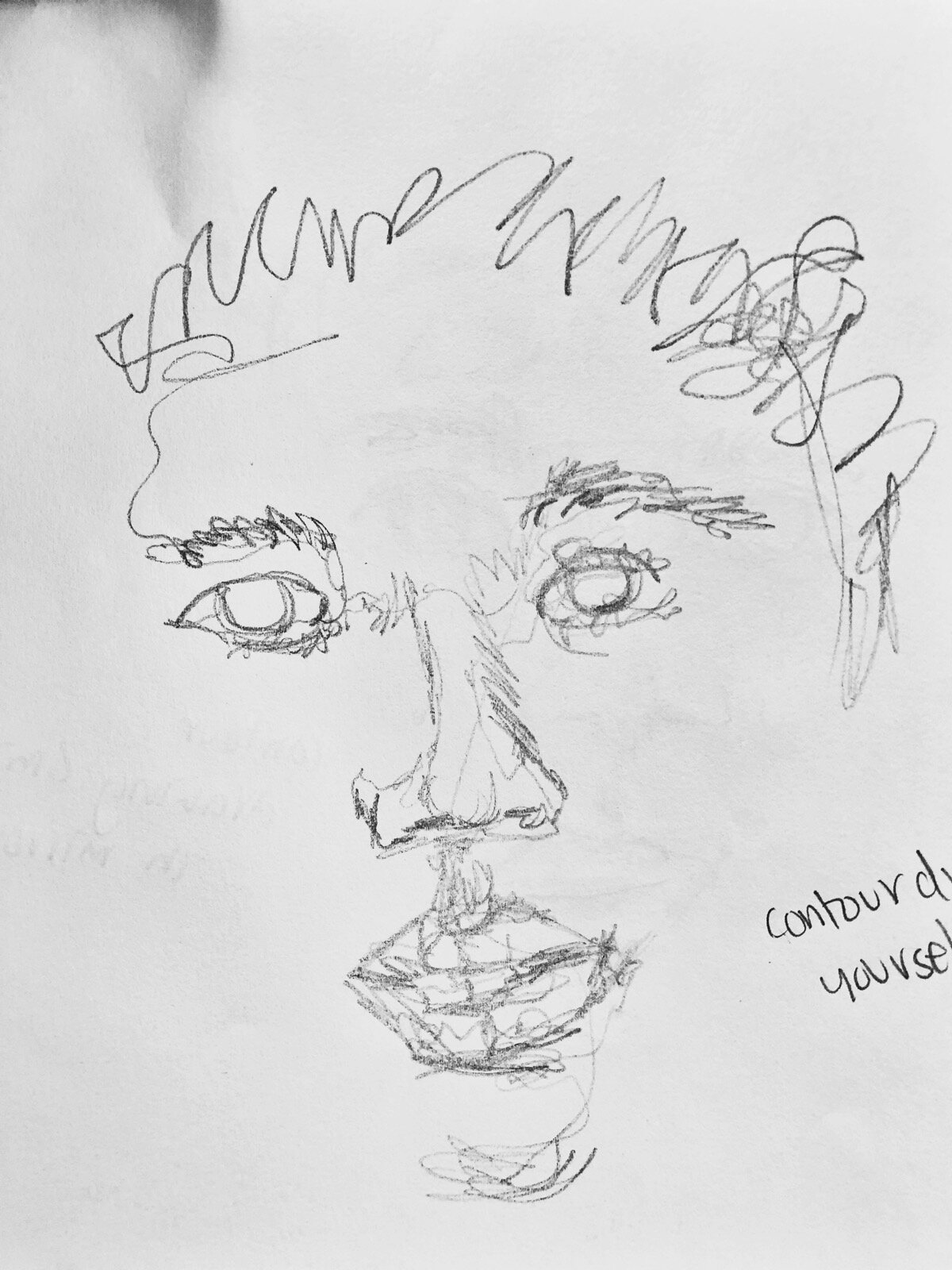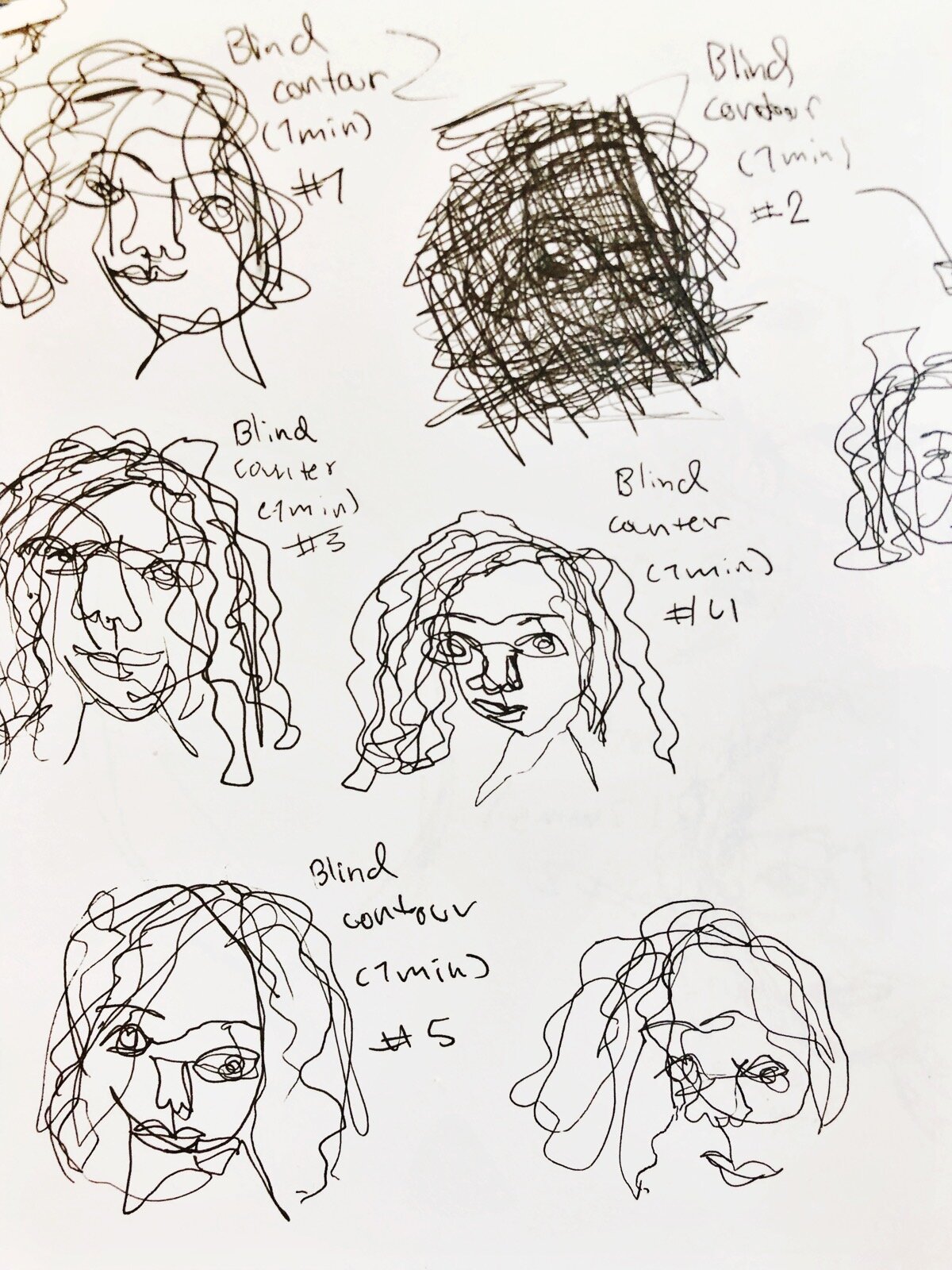How Blind Contour Exercises can make you a better artist
If there is anything I have learned in my years of art-making, it is the power of blind contour and contour drawing exercises. Not only are these exercises not confined to any age or level, but they teach the eyes and hands to move and work together in a way that drastically can improve technique and drawing skill. Hand-eye coordination is of prime importance for art-making, and these simple exercises with set up students for success in that realm.
Blind Contour
increases hand-eye coordination, which is the fundamental skill that fuels all forms of art-making.
Materials
Pencil or pen
Paper
Vocabulary
Line: A line is an identifiable path created by a point moving in space, and is otherwise known as a “moving point.” It is one-dimensional and can vary in width, direction, and length. Lines can be all sorts of shapes, widths, and usually describe the outside shape of a form. (1)
Contour line: This type of line defines the outline of a form as well as interior structure, without the use of shading. The goal is to use one continuous line to describe the form. This is one of the first drawing techniques little artists can learn. (2)
Blind contour line: Blind contour drawing is created without looking at the paper and without taking your pencil/pen off the paper. Instead, the artist’s concentration should be solely on the subject they are drawing. (3)
Contour Drawing exercises
Steps
Introduce the vocabulary above, talking about different kinds of lines.
Introduce the two rules of blind contour drawing
Don’t lift up your drawing utensil from the paper
Don’t look at your paper. Only look at the subject you are drawing
Do a series of short blind contour exercises that are entertaining and low-pressure to get in practice. These exercises should be short and sweet, and enhancing the practice while having some fun. Here are a few ideas of subjects and times:
Draw your neighbor (someone next to you?) for 15 seconds
Draw your hand for 30 seconds
Draw your shoes for 1 minute.
Do a series of longer contour drawing exercises that are not blind. This means students can look at their paper. Here are a few ideas of subjects and times:
Draw your neighbor (someone next to you?) for 1 minute
Draw yourself in the mirror for 2-3 minutes
Draw someone from across the room for 5 minutes
Draw out the window for 5-10 minutes






